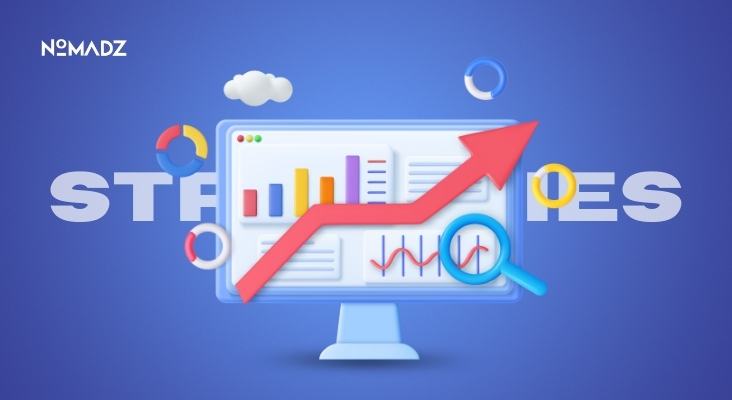Uncovering Untapped Opportunities with Market Intelligence in 2025
Data-driven decisions are not a buzzword: they’re your key to undiscovered wins. It is believed that in 2025, market intelligence will provide intelligent teams with a competitive advantage. And that advantage will be identifying opportunities ahead of competitors.
This blog uncovers winning strategies and a real-life case study where market analysis achieved 27% growth in 6 months. Ready to find opportunities other people miss? Let’s get into practical steps for your business.
Hidden Cost of Ignoring Market Intelligence
Businesses continue to pursue outdated reports or instincts. They act on stale industry report statistics or trailing financials. That generates missed signals, such as competitor actions, developing trends or pending corporate moves. Without current market analysis, you risk getting out of sync with customers and seeing competitors take market share.
The business marketplace is changing rapidly: companies require real insight to be ahead. Think of going to market blind to a competitor’s price movement or a new regulation rollout. It can be a tough anecdote for ignoring stock market activity and not leveraging market intelligence tools.
Being late on early warnings equals lost profits and increased costs to recover.
Smart Market Intelligence Strategy
Here’s how to secure easy wins with market intelligence, with real data and a genuine case study.
1. Define Your Intelligence Objectives
Begin by wondering, “What do we actually need to know?” Targets may be competitor pricing, upcoming corporate actions, market share movements or customer attitudes. Targeting the right tools and data feeds is ensured by clarity. When not positioned on clear objectives, even the highest intelligence may feel unmanageable or noisy.
Set quarterly intelligence targets and provide a clear connection between them and KPIs such as market expansion, attrition reduction or garnering new accounts. When entering a new market, take into account the benchmarks of local competitors if you’re pricing a new product. Zero in on elasticity and current consumer expectations.
The sharper the focus, the faster the payoff.
Also Read: How PPC Management Can Help You Maximize Your Money in 2025?
2. Invest in the Appropriate Tools for Market Intelligence Solutions
Many platforms track financials, social buzz and regulatory filings for your investment. A midsize healthcare customer added a stock market analysis app on top of regulatory feeds. Within 3 months, they identified a competitor’s FDA filing and shifted their strategy, enjoying a 15% acceleration in launch and maintaining 3 points of margin.
Select tools that easily integrate with your CRM or BI dashboards. Tools need to provide customizable notifications for stock market events, public remarks, competitor product news and leadership changes. Make sure your team is trained to read tool output and escalate if something does not look right.
A good tool with no process from within ends up with lost insights.
3. Mash up Multiple Data Sources
Integrate financial information (public filings, stock market events), social sentiment (forums, review sites), sales data (internal reports) and external research (reports, consumer studies). That end-to-end perspective provides real-time insight into opportunities. For instance, a software startup noticed mention spikes and new hires at a rival, indicating expansion.
This led them to ramp up their hiring and marketing efforts 2 weeks in advance. Layer on behavioral data from your site, chatbot chats or customer support history. This reveals miscommunication, unfulfilled expectations or underutilized competitive advantages. Sales, product and marketing alignment is guaranteed by cross-functional data integration.
4. Analyze, Not Just Collect Context
Utilize analytics dashboards and trained analysts to decipher signals. A midsize technology company applied an AI-based stock market analytics app to identify strange trading volume ahead of the time when one of its competitors would announce a supply alliance.
They acted quickly, releasing a targeted marketing campaign and acquiring an 8% market share in that area. Raw data out of context causes bad calls. For instance, a surge in product mentions may not be of interest, but a backlash instead. Context informs you when to act and when to hold.
Get your analyst trained to compare short-term trends to historical benchmarks. Test for irregularities and against various scenarios. Add region, segment or device layer filters to prevent misleading averages.
5. Turn It Into Action
It’s not about data; it’s about action. As an example, your pricing team can change margins depending on competitor industry report results. Or shift to a new area of operation after noticing changes in the business landscape. Intelligence needs to become strategy in days, not quarters.
Take ownership away from team leads and integrate decision timelines into your weekly planning cadence. Create a feedback loop to track whether insights lead to tangible results. If not, reconsider your sources or presumptions. Teams acting on intelligence experience quicker product releases and more targeted marketing campaigns.
Also Read: Top 6 Performance Marketing Trends to Watch in 2025
They also see a quantifiable boost in conversion and retention.
| Metric | Before Implementation | After Implementation |
| Time of Product Launch | 9 Months | 7.7 months (-14%) |
| Revenue Growth | 12% YoY | 27% in 6 months |
| Margin Decline Risk | Est. 5 pts | Constrained to <0.5 pt |
| Competitive Victories | 2 deals/quarter | 5 deals/quarter |
For wider reach, superimpose traditional market analysis with marketing intelligence, examining ad spend, channel performance and campaign resonance. Next, use marketing intelligence and planning to refine spend. A fintech startup reduced acquisition cost by 22% by shifting budget from under-performing channels.
These channels were identified by tracking 5,000 weekly ad impressions and sentiment metrics.
What is Global Marketing and How to Implement It?
By providing the right message to the global audience using the appropriate media, market analysis attempts to inform global marketing. To enable real-time customization of products and campaigns, global marketing considers language preferences, price sensitivity, local competition, and culture. These factors help tailor strategies to different markets effectively.
- Set goals by considering factors such as pricing, consumer sentiment, and the activities of rivals.
- Select appropriate market intelligence solutions.
- Install data feeds, including financial, social, and proprietary sources.
- Train analysts or platform users.
- Define dashboards and KPIs (time-to-insight, accuracy and revenue impact).
- Assign cross-functional actions to product, sales, and marketing.
- Review and iterate monthly.
Conclusion
Now is your moment! Market analysis isn’t optional in 2025: it’s essential. Companies using market intelligence solutions see faster launches, smarter pricing and measurable growth. You’re not guessing, you’re reacting early, with proof. If you create systems to track stock market activity, upcoming corporate actions, and real-time sentiment, you’ll be able to grab opportunities.
Ready to make something happen? Make insight turn into impact with Nomadz Digital and Innovation. Enable your team to find the hidden opportunities just beyond your line of sight.
FAQs
Q. What are the 4 types of market intelligence?
Competitive intelligence, product intelligence, market understanding and customer understanding.
Q. What is market intelligence used for?
It is used to offer prompt and useful information to reduce company risk and make better decisions.
Q. Which 3 components make up market intelligence?
Data gathering, analysis and planning inform wiser marketing strategies.
Q. What is a business market?
Organizations purchasing goods or services for business use or resale.
Q. What are the 4 P’s of global marketing?
The 4 P’s are: Product, Price, Place and Promotion.









Leave feedback about this